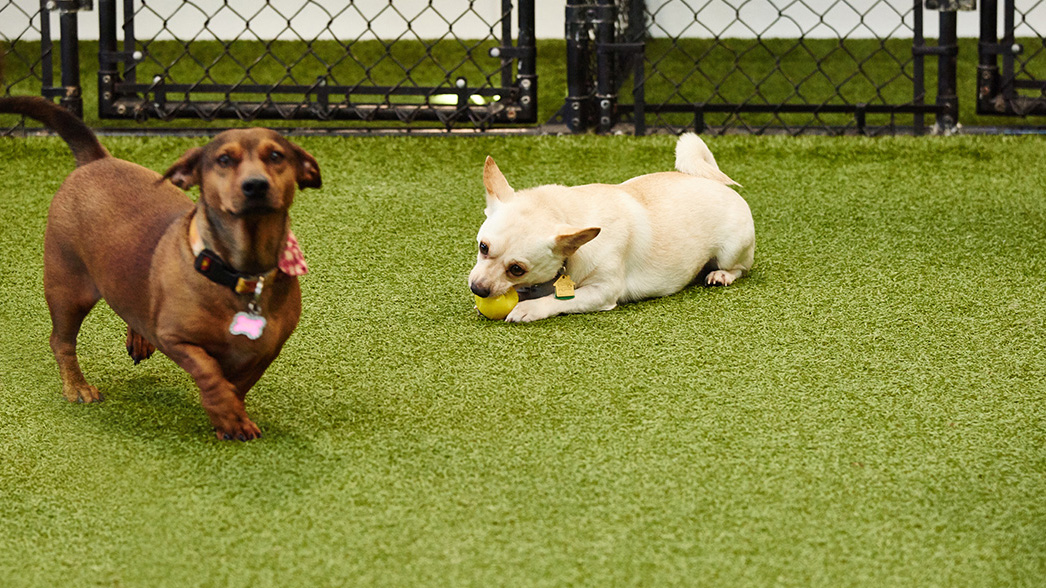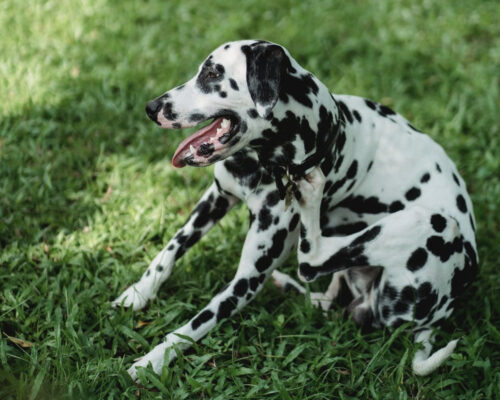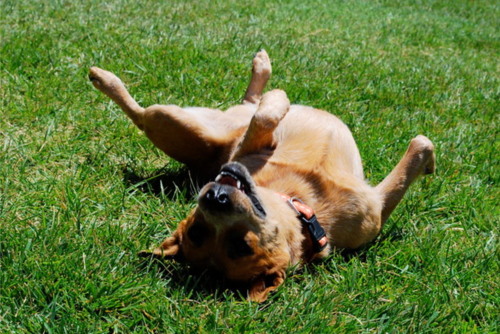
BLOG
Achoo! 5 Signs Your Dog May Be Suffering from Pollen Allergies
Merritt Milam | April 2, 2022
As much as we love the arrival of spring with its warm weather and blooming flowers, pollen allergies can turn that joy into a sneezing, wheezing, scratching, hot spot nightmare – for our pets.
Even before the first signs of yellow hit our cars, pollen allergies can be a major nuisance for pets. Like humans, a pollen allergy is the immune system’s reaction to the yellow stuff. From airborne particles to direct contact with their paws and nose, pollen will find its way onto your dog. Here are several signs your pet may have allergies.

Scratching
One of the most common signs of allergies is scratching. Whether they have a mild persistent itch or vigorous scratching, it can be the result of a pollen allergy. Untreated, scratching can cause skin breaks that can lead to infection.
Excessive Licking
When a dog’s skin becomes itchy due to pollen allergies, pets will lick the affected areas to get relief. The paws, belly, and private areas are typical places they will lick because of pollen or other allergens.
Hot Spots
Hot spots, or moist eczema, are common in areas where excessive licking has occurred. Some breeds like Labradors are suspectable to hot spots. If left untreated, hot spots can become infected.
Red, Stinky Ears
Pollen allergens not only cause itchy skin but also cause inflammation in a dog’s ears. This inflammation can lead to infection and red, stinky ears. Some dogs will also shake their heads initially as a sign of irritation.
Sneezing
Humans know all too well about the sneezing reaction to pollen allergies. If you notice your dog sneezing more than usual, that can be a sign they are experiencing an allergic reaction to pollen. Reverse sneezing (characterized by rapid and long inhalations, extending from the head and neck), can also be an indication they are suffering from a pollen allergy.
The peak season for pollen allergies is usually spring and summer. Some pets will also have allergy symptoms into the fall. The main culprits are pollen from grass, weeds, trees, and flowers. However, food and/or other contact agents can also be the root of allergy symptoms.

How can You Help Provide Relief?
While there is no cure for pollen allergies, pet parents should see their veterinarian for help identifying and treating their pet’s allergies. As noted earlier, allergies can be the result of food, environmental, or contact allergens, a vet will be able to prescribe a specific treatment plan for your pet. Frequent baths with hypoallergenic shampoo can provide soothing relief as well as wash some of the allergies off the pet’s coat.
We want all our Wags pets to enjoy the warmth and beauty of spring without the debilitating symptoms of pollen allergies.


